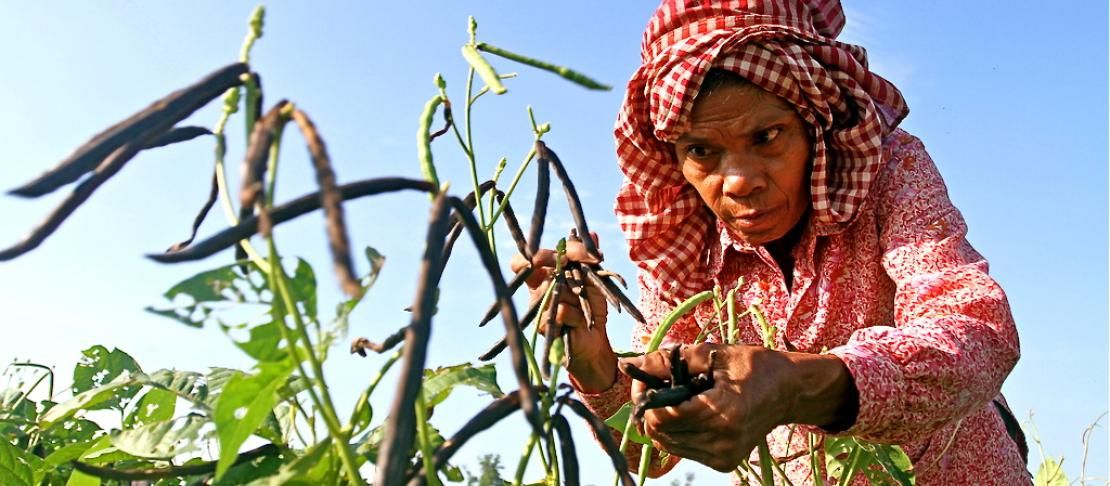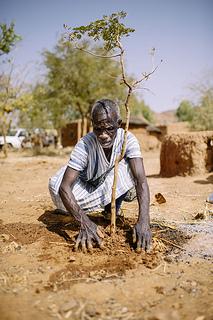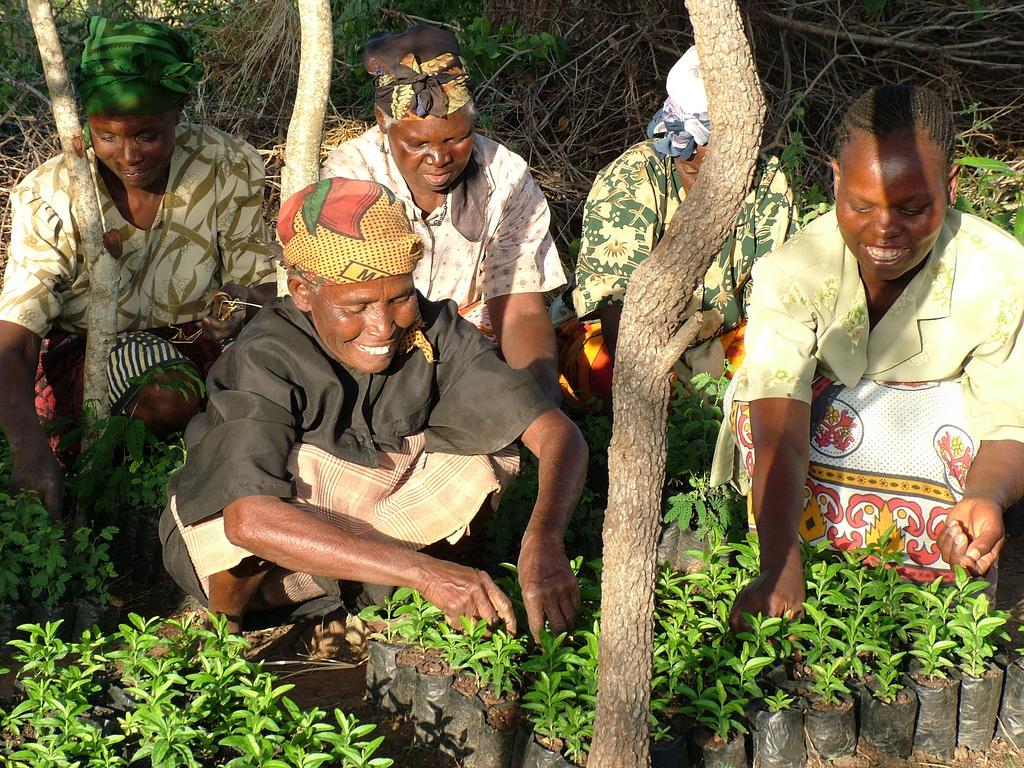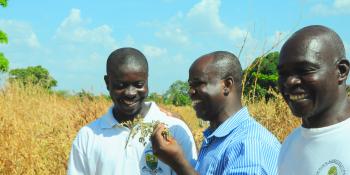Influencing change: What matters for farmers' ability to adapt to climate change?

A recent study provides insights into factors playing a role in adaptation to climate change on smallholder farms in East and West Africa and South Asia.
Farmers all over the world need to adopt improved agricultural practices if they are to adapt to our changing climate. So what are the factors influencing this behaviour change? Does access to weather information matter? Or the asset base of the household? And does participation in groups help?
With the ambition to better understand which factors influence farmers’ ability to adapt to climate change, a group of researchers started off by exploring our unique 12-country rural household database. The team of researchers looked for adaptive strategies, such as switching to more drought, flood or disease-resistant crops or investing in improved land management practices being followed across the surveyed households in East and West Africa and South Asia.
The results suggest that weather information, assets, and participation in social institutions do influence uptake of improved technologies and management practices, and there are region-specific differences that provide additional insights.
 The findings of this study are presented in the article “Smallholder farmer cropping decisions related to climate variability across multiple regions”, by Stephen Wood, Amir Jina, Meha Jaina, Ruth DeFries, based with Columbia University, and Patti Kristjanson leading CCAFS Linking Knowledge to Action work.
The findings of this study are presented in the article “Smallholder farmer cropping decisions related to climate variability across multiple regions”, by Stephen Wood, Amir Jina, Meha Jaina, Ruth DeFries, based with Columbia University, and Patti Kristjanson leading CCAFS Linking Knowledge to Action work.
Information, assets and social capital
The research team addressed three key questions: (1) are farmers with more access to weather information more likely to make on-farm changes; (2) are less wealthy farmers, or farmers with fewer assets, less likely to make on-farm changes; and (3) are farmers that participate in groups more likely to make changes? These groups include credit/savings and loan groups and/or agricultural or those related to natural resource management (e.g. water users or tree nurseries). Most of the changes being made, such shifting to shorter-cycle varieties, are helping farmers build resilience to climate change in the long-term.
The group used data from a CCAFS baseline effort involving a large-scale survey conducted in 2010-2011 with over 4000 households in 85 villages spread across 12 countries in Sub-Saharan Africa and South Asia. The survey, training materials and data have been made open access and are available in a special data portal.

The study found that engagement in social institutions, such as tree nursery groups, did correlate with the adoption of new farming practices. Photo: This is Excellent.
The study does show some general patterns, and some interesting differences in changes made by farmers across the regions:
“People usually change their practices for multiple reasons”, says Patti Kristjanson, co-author and CCAFS Theme Leader. “But it is interesting to see that market-related reasons are mentioned much more often in Bangladesh and India than they are in East and West Africa, and climate-related reasons are cited by half of the West African households but by only 13% of Indian households.”
With attention and efforts now being put on improving weather and climate forecasting in many of these countries, it is interesting to see that the results of this study show that households that reported having access to immediate or short-run weather forecasts were more likely to have made some change to their farming practices in the last 10 years.
The relationship between group participation and turning to new and improved agriculture practices also shows up as being significant, particularly in South Asia and East Africa:
"When we looked at farmers participating in various agriculture and natural-resource related groups, we did see a positive correlation in all regions between group membership and frequency of agricultural practice changes”, Patti said.
Why is this important?
Understanding what changes farming households have already been making and why they are making them is a key first step to better understand what might be done to encourage further adaptations. For sure, it is a first step to effective climate adaptation policies and strategies for the agriculture sector.
Download: Smallholder farmer cropping decisions related to climate variability across multiple regions. Stephen Wood, Amir Jina, Meha Jaina, Ruth DeFries, Patti Kristjanson. Global Environmental Change.
This study was made possible due to our open access policy. Explore our Baseline Surveys and Data-set further
Baseline survey stories on our blog:
Adapting on the ground: Are farmers' needs being met? (Blog)
Bit by bit, East African smallholder farmers adapting to climate change (Blog)
Bangladesh study reveals strong relationship between education and climate adaptation (Blog)
Photo in the text: CIFOR



